Though itís more than 50 years since my first bird photograph was published, Iíve always remained a birdwatcher who photographs birds, not a photographer whose favourite quarry has feathers. The difference isnít quite as subtle as it sounds, as...
Though itís more than 50 years since my first bird photograph was published, Iíve always remained a birdwatcher who photographs birds, not a photographer whose favourite quarry has feathers. The difference isnít quite as subtle as it sounds, as I can enjoy enormously a great day out when I fail to take a single photograph, but for a photographer such a day would be a failure.
There was a time when I flirted with the idea of becoming a proper photographer. Back in the 80s I was using a lovely pair of Nikon FE2 cameras, and even had a 400mm f5.6 lens that was sharp and easy to use, despite being manual focus. However, 400mm wasnít really long enough for bird photography, so I eventually bought myself a secondhand Nikon 600mm f5.6 lens, then the favourite long lens of many serious bird photographers. I even bought a 2x convertor to go with it.†
Sadly, I never got on with the 600mm, as it was simply too big, too cumbersome, to enjoy using it. It was impossible to use hand-held, so had to be mounted on a tripod, which added to its already considerable weight. I was using Kodachrome 64 transparency film Ė probably the best transparency film then available Ė but it was a very slow, and impossible to use in low light or on dull days.
I did take the 600mm on a couple of serious trips Ė one to Siberia, the other to California Ė and managed to take some satisfactory pictures, but it never gave me any pleasure when I was using it. One of the problems was finding the bird in the viewfinder, particularly when using the converter. At the time I was a useful shot with a shotgun, so my hand-and-eye coordination was fine, but with the big lens on a tripod I was painfully slow, and all but the most dim-witted of birds had flown by the time I had the wretched thing pointed at them. This was back in the days of manual focus, so even when the bird filled the viewfinder you still had to fiddle with the focussing.†
As for flying birds Ė forget it. I didnít have the skill (or strength) necessary to point the contraption at anything flying. After a couple years I decided to get rid of it, and remarkably managed to sell it for exactly the same price as I had paid Ė £1600. This was a lucky escape, as within a short time autofocus lenses arrived, and nobody wanted a manual-focus 600mm lens anymore. The value of these lenses plummeted, depreciating as fast as a peregrine can stoop.†
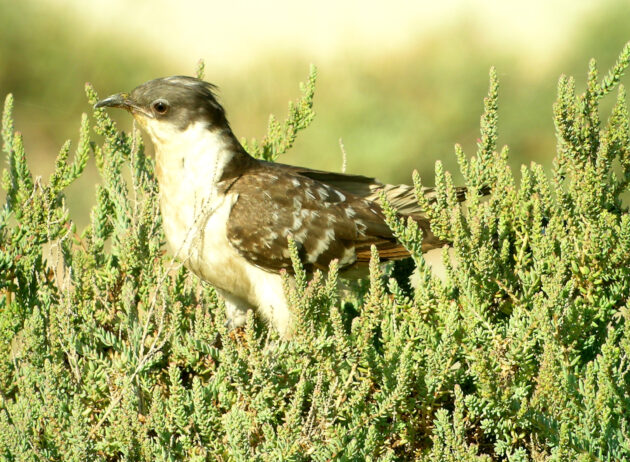
My first-ever digiscoped bird Ė a Great Spotted Cuckoo in Cyprus
At the time I was travelling a lot in search of birds, usually leading holidays. One of the unwritten laws of bird tours is that the leader shouldnít take photographs as his (or her) job is to show the clients birds. This usually means carrying a telescope, and most certainly not a camera with a whopping great lens. Thus I wasnít tempted to buy one of the new autofocus cameras and lenses, but I did have a small Nikon E5400 camera in my pocket for landscape shots. (This was, of course, before the days of mobile phones with built-in cameras.) It was on a trip to Cyprus, watching a Great Spotted Cuckoo (above), that one of my clients suggested I should have a go at digiscoping it, a technique Iíd never even heard of. Remarkably, the lens of the Nikon fitted snugly into the eyepiece of my Swarovski telescope. Even more surprising, the results were good, too.
Digiscoping had the great advantage that it was possible to photograph birds while leading bird tours, and I found that many of my clients liked to see the photographs I had taken. There were frustrations, as my golden rule was that my clients should be able to look at the bird, or birds, through my scope before I attempted to take any photographs, but I did take many pictures that at the time I found pleasing.†
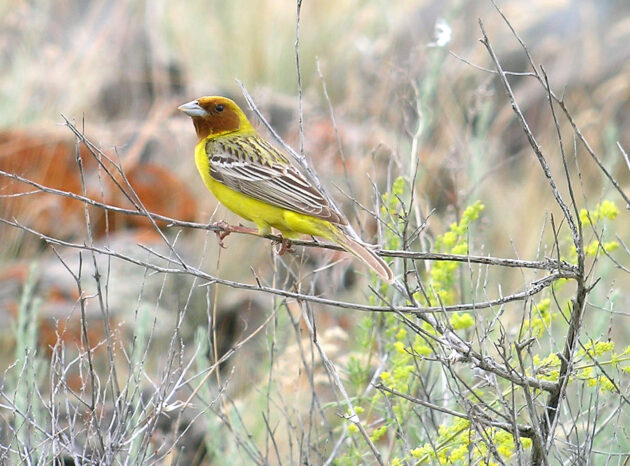
A Red-Headed Bunting in Kazakhstan Ė a satisfying digiscoped shot
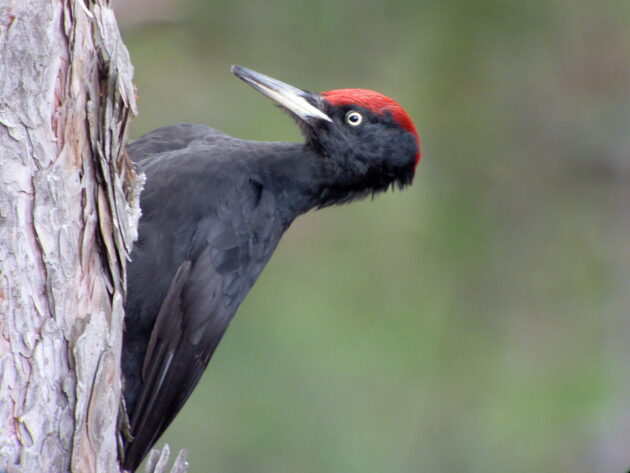 Black woodpecker Ė filling the frame of the telescope and (below) Greater Flamingoes: both shots were digiscoped in Northern Greece
Black woodpecker Ė filling the frame of the telescope and (below) Greater Flamingoes: both shots were digiscoped in Northern Greece
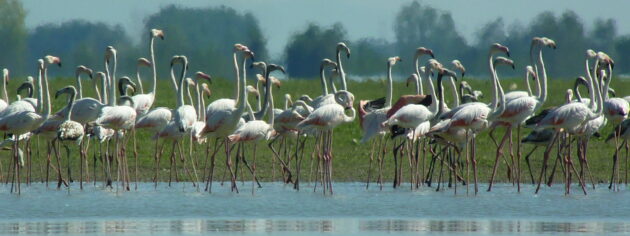
I changed the lens on my Swarovski to a 25 x 50 zoom, and though this didnít work so well with the old Nikon camera, it did with the Panasonic DMC-TZ7 camera that replaced it. I have a strong hunting instinct, and digiscoping gave me the satisfaction of bagging my quarry. It was fun to come home from a day in the field to load my photographs on to my lap top, and later my iPad.†
I never used adapters, just placing the little camera on the telescopeís lens. The resulting picture needed cropping, but this was a job that took just a few seconds. I was always pretty quick at pointing the scope at my quarry, and I became equally speedy at taking my photographs. Arguably the high point of my digiscoping career was in 2012, when I won the digiscoping class in the British Birds Bird Photographer of the Year awards.† My winning picture was of a Wryneck, photographed in an apple tree in an orchard in Poland the previous year. It was a pleasing shot: the exposure was spot on, the bird not too big in the image, while the out-of-focus background and blossom on the apple tree complemented the subject. As the Wryneck is a lost breeding bird in Britain itís also a bird of special interest to us Brits and one I never tire of photographing.
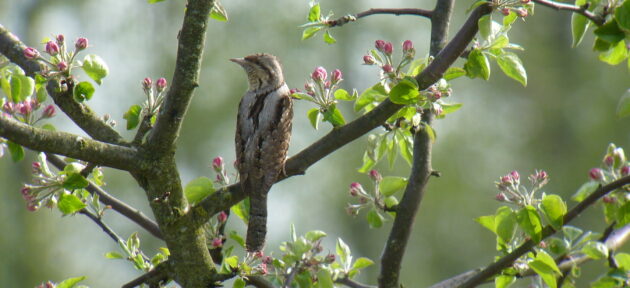 Competition winner: a digiscoped Wryneck in a Polish apple orchard
Competition winner: a digiscoped Wryneck in a Polish apple orchard
However, digiscoping did have its limitations. Flying birds may not have been impossible Ė I managed to take some reasonable pictures of Dalmatian Pelicans in flight, while the glossy ibises (below) are OK Ė but was exceedingly challenging. And every photograph required the telescope to be set up on a tripod, something that took time. Spontaneous photography was out of the question. The quality of the image produced by small digital cameras was nothing like as good as that from decent SLR. However, it can still be impressive, as the header photograph of a Hoopoe at the top of this page demonstrates.
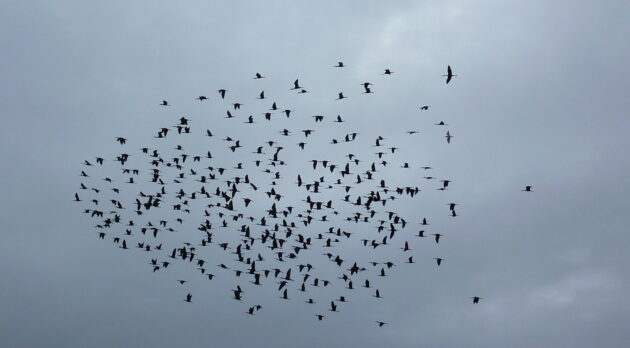 Glossy ibises digiscoped in Portugal Ė digiscoping flying birds is a major challenge
Glossy ibises digiscoped in Portugal Ė digiscoping flying birds is a major challenge
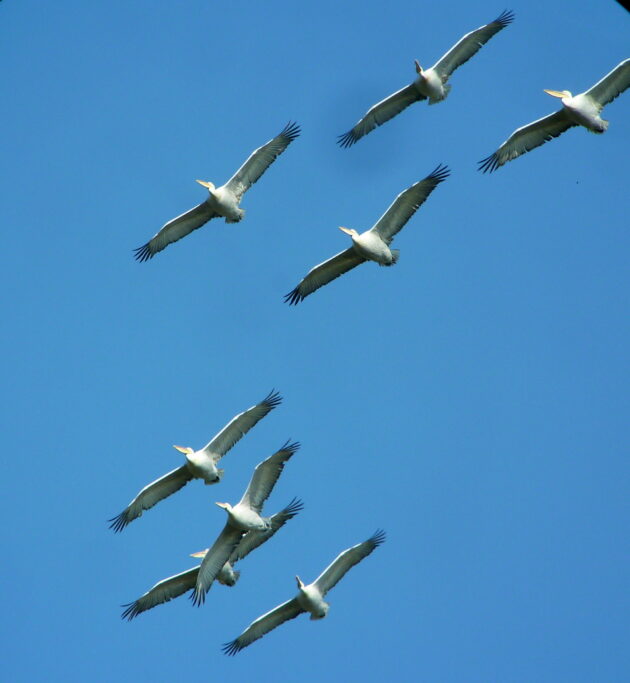 Digiscoped Dalmatian pelicans Ė big birds can be digiscoped in flight, but itís not easy to get sharp pictures. Small birds in flight are impossible
Digiscoped Dalmatian pelicans Ė big birds can be digiscoped in flight, but itís not easy to get sharp pictures. Small birds in flight are impossible
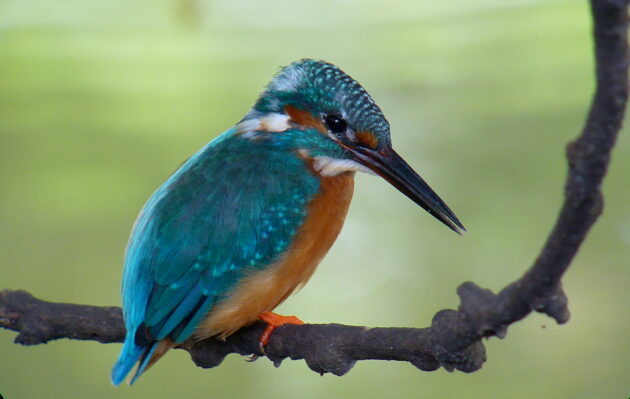 This digiscoped Kingfisher in India was happy to pose
This digiscoped Kingfisher in India was happy to pose
It was on a trip to western Sicily that I was introduced for the first time to the solution. One of my clients had brought with him his new Olympus digital camera, an EM-1. It was mirrorless and compact, and both small and light enough to be highly portable. I was sufficiently impressed to go home and buy one. That first camera broke down during a birding trip to Portugal, but Olympus replaced it with a new one that worked perfectly until I traded it in for an EM-1 Mk II, which remains my camera today. The next upgrade will be to an OM-1.
I coupled the EM-1 with an Olympus 75mm-300mm lens, which was notably light and remarkably inexpensive. This gave me a highly portable camera that, because of the cameraís four-thirds system, provided the equivalent magnification of the old 600mm lens. It was the sort of kit that I could hang from my shoulder and hardly know it was there, making the perfect camera for a birdwatcher. The little 75-300mm lens also proved to be satisfyingly sharp, especially considering how little it cost.
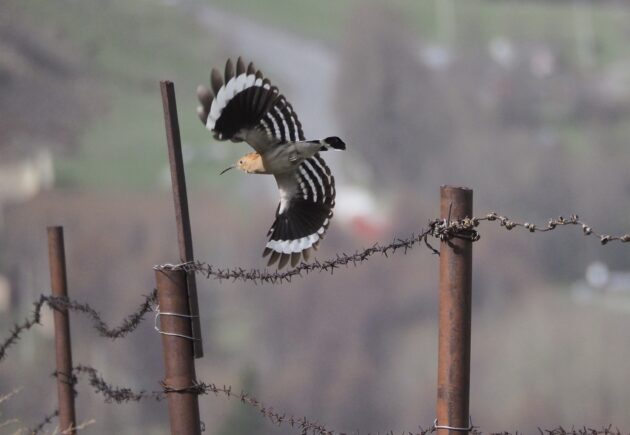 Hoopoe and barbed wire, photographed in Georgia with an Olympus EM-1 and 75-300mm lens
Hoopoe and barbed wire, photographed in Georgia with an Olympus EM-1 and 75-300mm lens
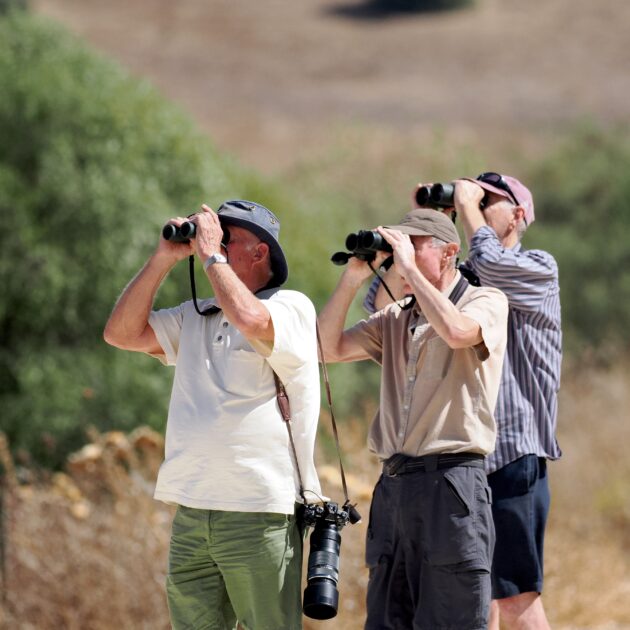
DT birdwatching in Andalucia. Iím still principally a birdwatcher, despite the camera (with 100-400mm lens) hanging on my shoulder
Though I still use this lens, my standard birding lens is now the OM Systemís M-Zuiko† 100-400mm f5-6.3. Itís just about compact enough for me to remain a birdwatcher with a camera, not just a photographer, while its weight (1120g) is at the upper limit of what Iím prepared to carry on my shoulder. At around £1000 itís also affordable. Thanks to a brilliant image stabilisation system I can use it hand held and get razor-sharp results, while it also performs well with a 1.4 convertor. It is also highly effective for butterflies, as it allows very close focus.
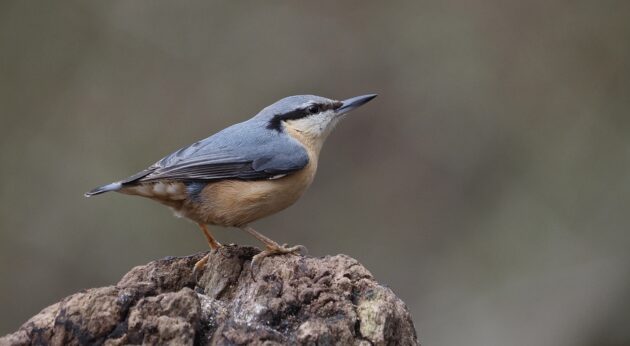 Eurasian Nuthatch Ė a pin-sharp shot with the 100-400mm lens, taken hand-held at maximum magnification and with a shutter speed of only 1/100sec
Eurasian Nuthatch Ė a pin-sharp shot with the 100-400mm lens, taken hand-held at maximum magnification and with a shutter speed of only 1/100sec
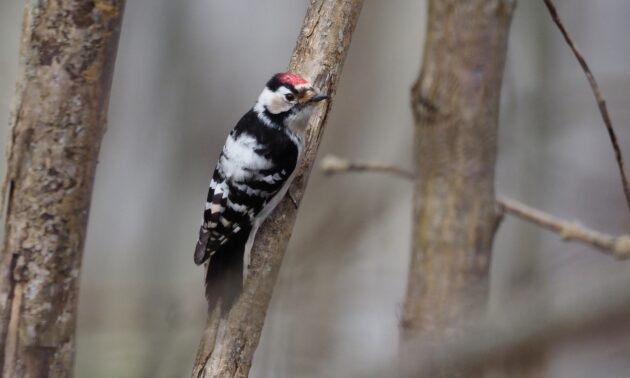 Lesser Spotted Woodpecker in Estonia, with 100-400m lens plus 1.4 converter
Lesser Spotted Woodpecker in Estonia, with 100-400m lens plus 1.4 converter
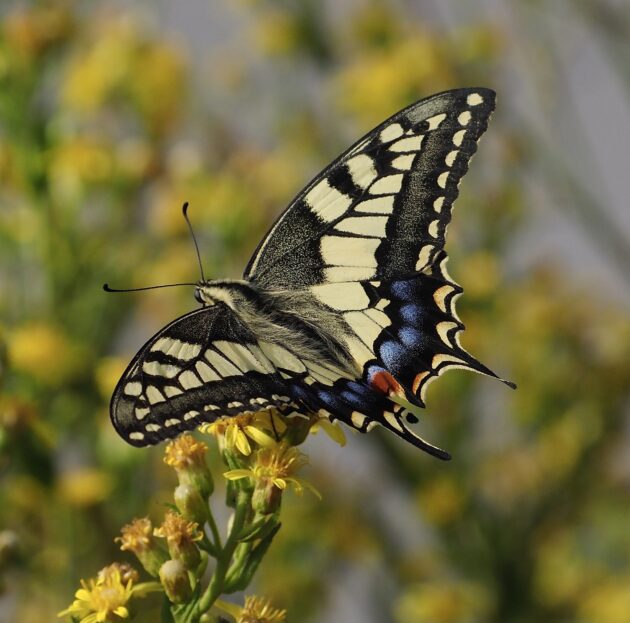 Close focussing makes the Zuiko 100-400mm lens great for butterfly photography. This Swallowtail was photographed in Andalucia
Close focussing makes the Zuiko 100-400mm lens great for butterfly photography. This Swallowtail was photographed in Andalucia
In addition to this lens, OM Systems (what used to be Olympus) offers a professional 150-400mm f4.5 lens. It is a tremendous piece of kit, and even has a built in 1.25x teleconverter, but it is very expensive (nearly £7000). It is also considerably bigger than the 100-400mm, weighing a hefty 1875g. A professional bird photographer friend of mine enthuses about his, and the results he has achieved with it are superb. Iíve used it and was deeply impressed. Iíd love one, but ownership of such a lens would turn me into a serious photographer, not a birder with a camera. Iím happy as I am.
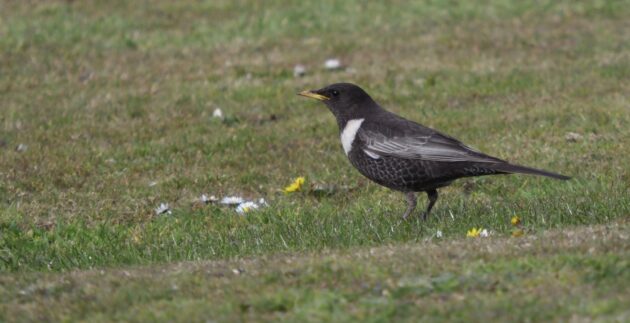 Ring Ouzel in Norfolk, photographed with the OM Systems M.Zuiko Digital ED 150-400mm lens at maximum magnification, with MC-20 2x converter. Itís still sharp at 1000mm, despite being hand held (1/500sec)
Ring Ouzel in Norfolk, photographed with the OM Systems M.Zuiko Digital ED 150-400mm lens at maximum magnification, with MC-20 2x converter. Itís still sharp at 1000mm, despite being hand held (1/500sec)
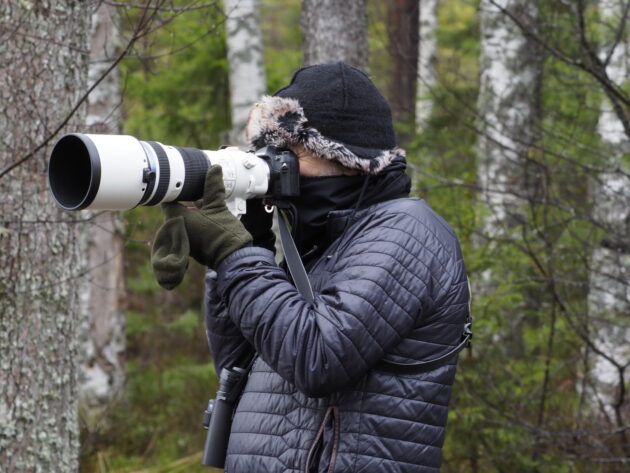 The M.Zuiko Digital ED 150-400mm lens from OM Systems is a great piece of kit for the professional
The M.Zuiko Digital ED 150-400mm lens from OM Systems is a great piece of kit for the professional
The post Birdwatcher or Bird Photographer? first appeared on 10,000 Birds.


